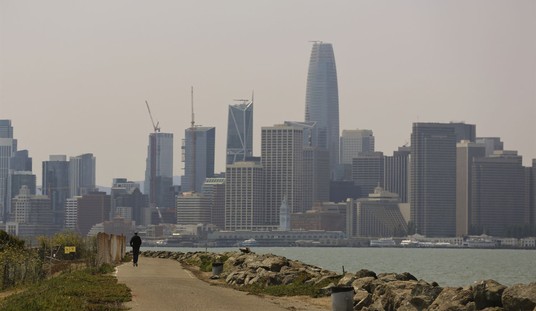We’re still working off of last week’s SOTU, which unsurprisingly turned into a cornucopia of OOTDs. CNS News catches this moment from the White House’s “enhanced livestream” of Barack Obama’s speech, in which the administration tried to emphasize Obama’s claims by adding charts and data on the screen. That would have been impressive — had the data and charts actually corroborated Obama’s claims. In one case, the display actually refuted one big basis for Obama’s class-warfare argument:
As Obama was speaking, the White House “Enhanced Livestream” showed a split screen. On the left was Obama. On the right was a chart. At the bottom, the chart was sourced as follows: “CBO, After Tax Income Adjusted for Inflation.”
The chart showed what it said was the “[p]ercentage change in income since 1979.” It featured a red line showing that the inflation-adjusted income of the “TOP 1%” increased by something more than 250 percent, and a blue line showing that the inflation-adjusted income of the “MIDDLE 60%” increased by about 40 percent.
Contrary to what Obama said in the speech at the very moment this chart appeared next to him on the White House Internet broadcast, the chart did not indicate that there was a group of American earners whose paychecks “weren’t” growing in the years after 1979—even when adjusted for inflation.
The actual Congressional Budget Office report that the White House graphic cited was published in October. It is titled, “Trends in the Distribution of Household Income between 1979 and 2007.”
The report traced the trend in American incomes over most of the three decades preceding Obama’s 2008 election. It did not show what has happened to American incomes since Obama became president.
According to the CBO report, Americans at all levels of the national income ladder saw their inflation-adjusted incomes rise from 1979 to 2007.
“For the 60 percent of the population in the middle of the income scale (the 21st through 80th percentiles), the growth in average real after-tax household income was just under 40 percent,” said the report.
Yes, according to the report, those in the top 1 percent saw their inflated-adjusted incomes increase by 275 percent from 1979 to 2007.
But those in the 20 percent just below the top 1 percent saw their inflation-adjusted incomes increase by 65 percent.
And those in the lowest 20 percent saw their inflation-adjusted incomes increase by 18 percent.
So yes, all of the classes of income earners saw after-inflation gains, or real gains, in income. The top earners grew the most, of course, but that’s because their growth came largely from risk-taking activities and not wages. What’s missing in this analysis is the fact that the top 1% has not remained static during those four decades, but change constantly as risk-takers win and lose on their risk. It’s that volatility that would normally discourage risk-taking — which is why we tax it at a lower rate so as to provide more incentive to take the risk and keep more of the reward if, and only if, the risk pays off.
Nice of Obama and the White House to make that clear, even if the President himself hasn’t quite figured it out.

Got an Obamateurism of the Day? If you see a foul-up by Barack Obama, e-mail it to me at [email protected] with the quote and the link to the Obamateurism. I’ll post the best Obamateurisms on a daily basis, depending on how many I receive. Include a link to your blog, and I’ll give some link love as well. And unlike Slate, I promise to end the feature when Barack Obama leaves office.
Illustrations by Chris Muir of Day by Day. Be sure to read the adventures of Sam, Zed, Damon, and Jan every day!








Join the conversation as a VIP Member